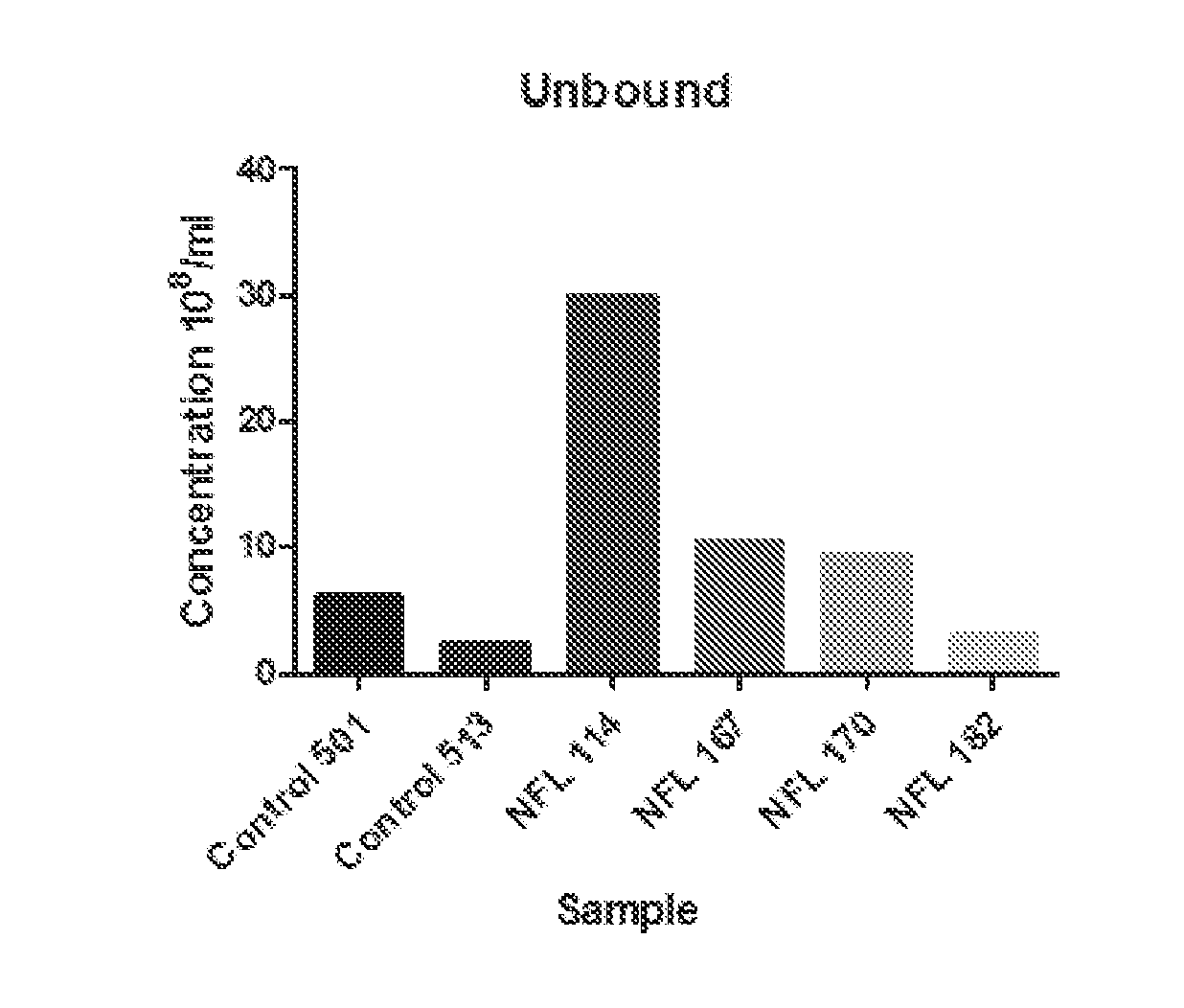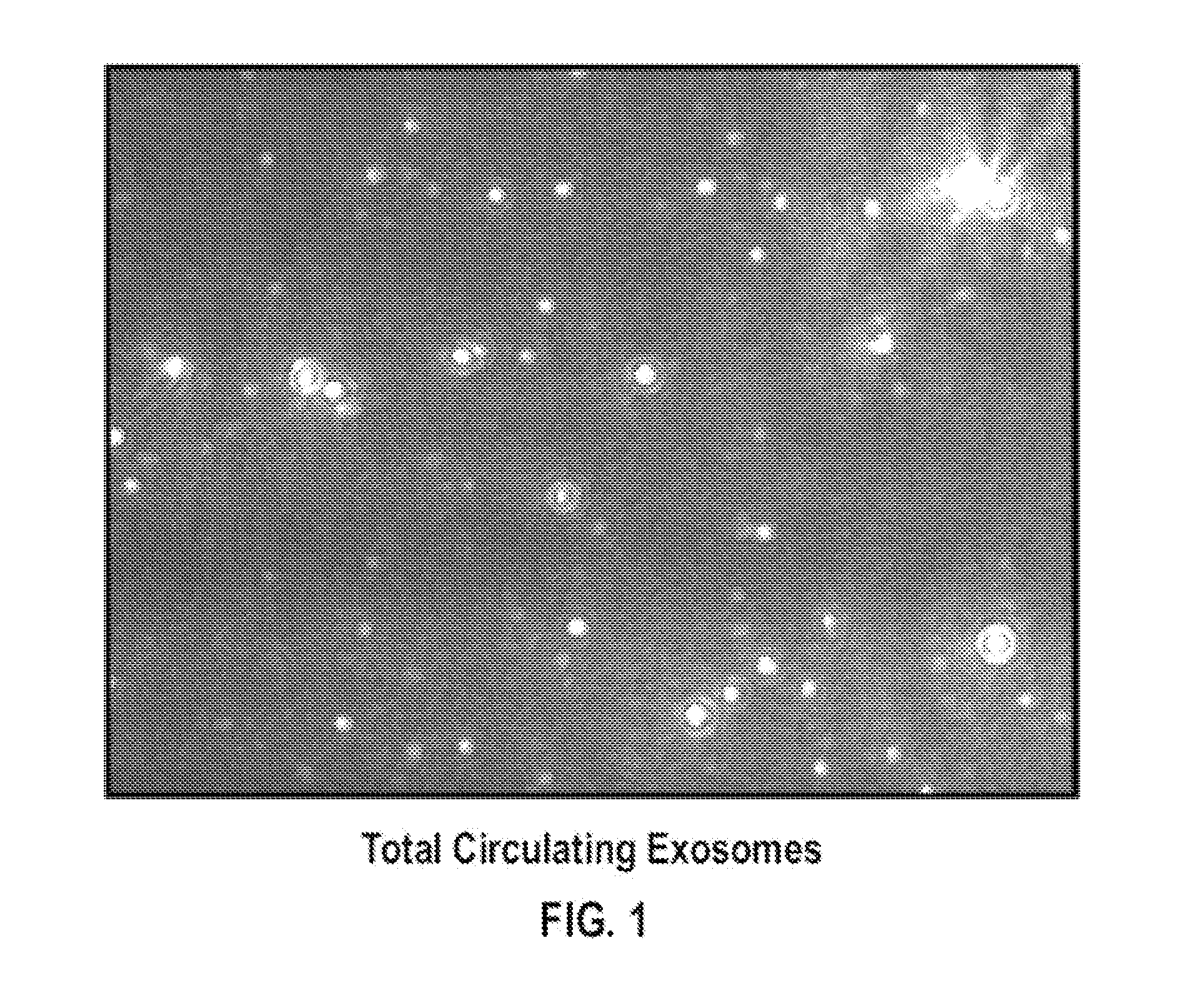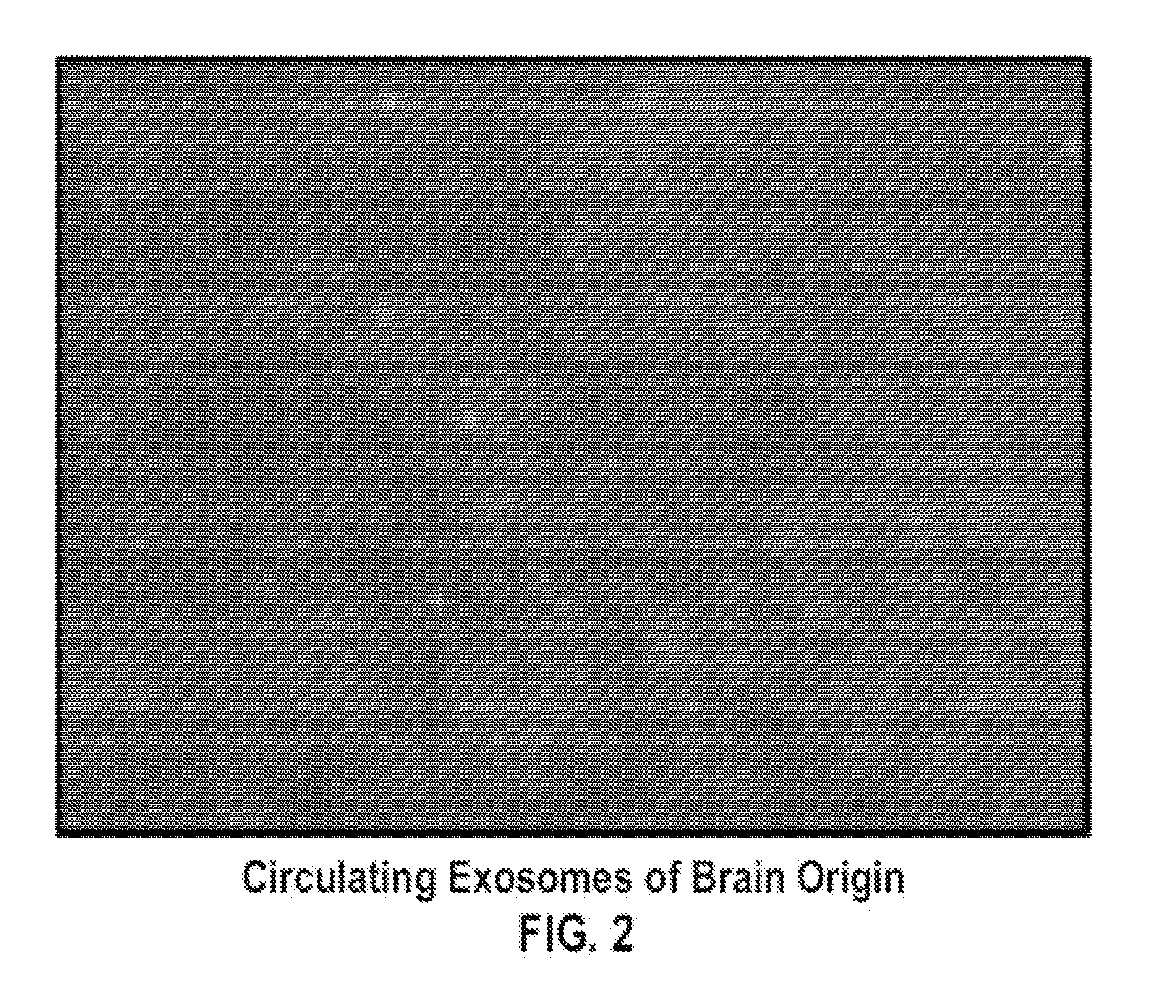Brain specific exosome based diagnostics and extracorporeal therapies
a brain and exosome technology, applied in the field of brain exosome based diagnostics and extracorporeal therapies, can solve the problems of not realizing the cte brain device, which is not reliable, and achieves the effects of reliable, reliable, portable, and minimally invasiv
- Summary
- Abstract
- Description
- Claims
- Application Information
AI Technical Summary
Benefits of technology
Problems solved by technology
Method used
Image
Examples
example 1
Preparation of Antibodies Covalently Coupled to Agarose Using Cyanogen Bromide
[0330]Brain biomarker specific antibodies such as a monoclonal antibodies, or a binding fragments thereof (e.g., a Fab fragment or a fragment having a CDR domain), which are specific for an antigenic site or epitope present on tau, β-amyloid, S100 β, neuron-specific enolase, glycoprotein A2B5, CD133, NQ01, synaptophysin, neuronal nuclei, MAB1569, polysialic acid-neural cell adhesion molecule (PSA-NCAM), or neurogenic differentiation 1 (NeuroD or Beta2), or glycosylated or phosphorylated forms of these molecules, molecules are covalently coupled to agarose (preferably colored agarose) using cyanogen Bromide and cyanogen bromide (CNBr) activated agarose according to Cuatrecasas, et al. (Cuatrecasas, Wilchek and Anfinsen. Proc Natl Acad Sci USA 61(2): 636-643, 1968). Exemplary binding agents that are used in this example include antibodies such as: β-amyloid antibody (clone 20.1), which is a mouse monoclonal ...
example 2
Preparation of an Antibody Covalently Coupled to Glass Beads Via Schiff's Base and Reduction with Cyanoborohydride
[0331]An antibody covalently coupled to glass beads, preferably colored glass beads, via Schiff's Base and reduction with cyanoborohydride is prepared. The affinity matrix is prepared by a modification of the method of Hermanson (Hermanson. Bioconjugate Techniques: 785, 1996). Exemplary binding agents that are used in this example include antibodies such as: β-amyloid antibody (clone 20.1), which is a mouse monoclonal IgG2b raised against amino acids 1-40 of human β-amyloid; tau antibody (clone D-8), which is a mouse monoclonal IgG2b raised against amino acids 1-150 of human tau; S100 β chain antibody (clone 9A11B9), which is a mouse monoclonal IgG1 raised against the full length recombinant human S100 β chain protein; anti-A2B5 antibody [clone 105], which is a mouse monoclonal antibody raised against full length human A2B5 and binding fragments of said antibodies (e.g.,...
example 3
Preparation of an Exosome Specific Antibody Covalently Coupled to Chromosorb (Diatomaceous Earth) Using Glutaraldehyde
[0332]Brain biomarker specific antibodies such as a monoclonal antibodies, or a binding fragments thereof (e.g., a Fab fragment or a fragment having a CDR domain), which are specific for an antigenic site or epitope present on tau, β-amyloid, S100 β, neuron-specific enolase, glycoprotein A2B5, CD133, NQ01, synaptophysin, neuronal nuclei, MAB1569, polysialic acid-neural cell adhesion molecule (PSA-NCAM), or neurogenic differentiation 1 (NeuroD or Beta2), or glycosylated or phosphorylated forms of these molecules, molecules) are covalently coupled to Chromosorb (Diatomaceous Earth) using glutaraldehyde. Exemplary binding agents that are used in this example include antibodies such as: β-amyloid antibody (clone 20.1), which is a mouse monoclonal IgG2b raised against amino acids 1-40 of human β-amyloid; tau antibody (clone D-8), which is a mouse monoclonal IgG2b raised a...
PUM
| Property | Measurement | Unit |
|---|---|---|
| diameter | aaaaa | aaaaa |
| size | aaaaa | aaaaa |
| diameter | aaaaa | aaaaa |
Abstract
Description
Claims
Application Information
 Login to View More
Login to View More - R&D
- Intellectual Property
- Life Sciences
- Materials
- Tech Scout
- Unparalleled Data Quality
- Higher Quality Content
- 60% Fewer Hallucinations
Browse by: Latest US Patents, China's latest patents, Technical Efficacy Thesaurus, Application Domain, Technology Topic, Popular Technical Reports.
© 2025 PatSnap. All rights reserved.Legal|Privacy policy|Modern Slavery Act Transparency Statement|Sitemap|About US| Contact US: help@patsnap.com



